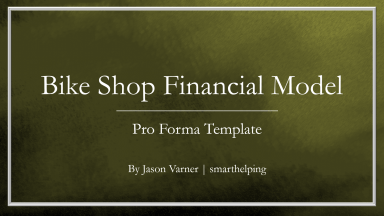
Last version published: 02/01/2024 09:54
Publication number: ELQ-18827-4
View all versions & Certificate

Bike Shop Startup Financial Model
All the logic and bottom-up assumptions you need to create a bike shop financial forecast and DCF Analysis over 5 years.
Further information
Provide the structure to create a 5-year financial forecast and minimum equity requirement.
Any sort of bike shop or bike distributor.















